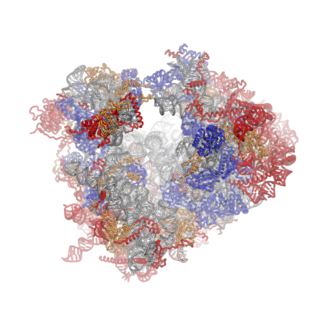 | |
| Names | |
|---|---|
| IUPAC name 2-amino-2-[(2R,3S,5S,6R)-5-amino-2-methyl-6-[(2R,3S,5S,6S)-2,3,4,5,6-pentahydroxycyclohexyl]oxyoxan-3-yl]iminoacetic acid | |
| Other names Kasumin; 3-O-[2-Amino-4-[(carboxyiminomethyl)amino]-2,3,4,6-tetradeoxy-D-arabino-hexopyranosyl]-D-chiro-inositol | |
| Identifiers | |
3D model (JSmol) | |
| ChEBI | |
| ChemSpider | |
| ECHA InfoCard | 100.116.563 |
| KEGG | |
PubChem CID | |
| UNII | |
CompTox Dashboard (EPA) | |
| |
| |
| Properties | |
| C14H25N3O9 | |
| Molar mass | 379.366 g·mol−1 |
Except where otherwise noted, data are given for materials in their standard state (at 25 °C [77 °F], 100 kPa). | |
Kasugamycin (Ksg) is an aminoglycoside antibiotic that was originally isolated in 1965, from Streptomyces kasugaensis , a Streptomyces strain found near the Kasuga shrine in Nara, Japan. Kasugamycin was discovered by Hamao Umezawa, who also discovered kanamycin and bleomycin, as a drug that prevent growth of a fungus causing rice blast disease. It was later found to inhibit bacterial growth also. It exists as a white, crystalline substance with the chemical formula C14H28ClN3O10 (kasugamycin hydrochloride). It is also known as kasumin. [1]










